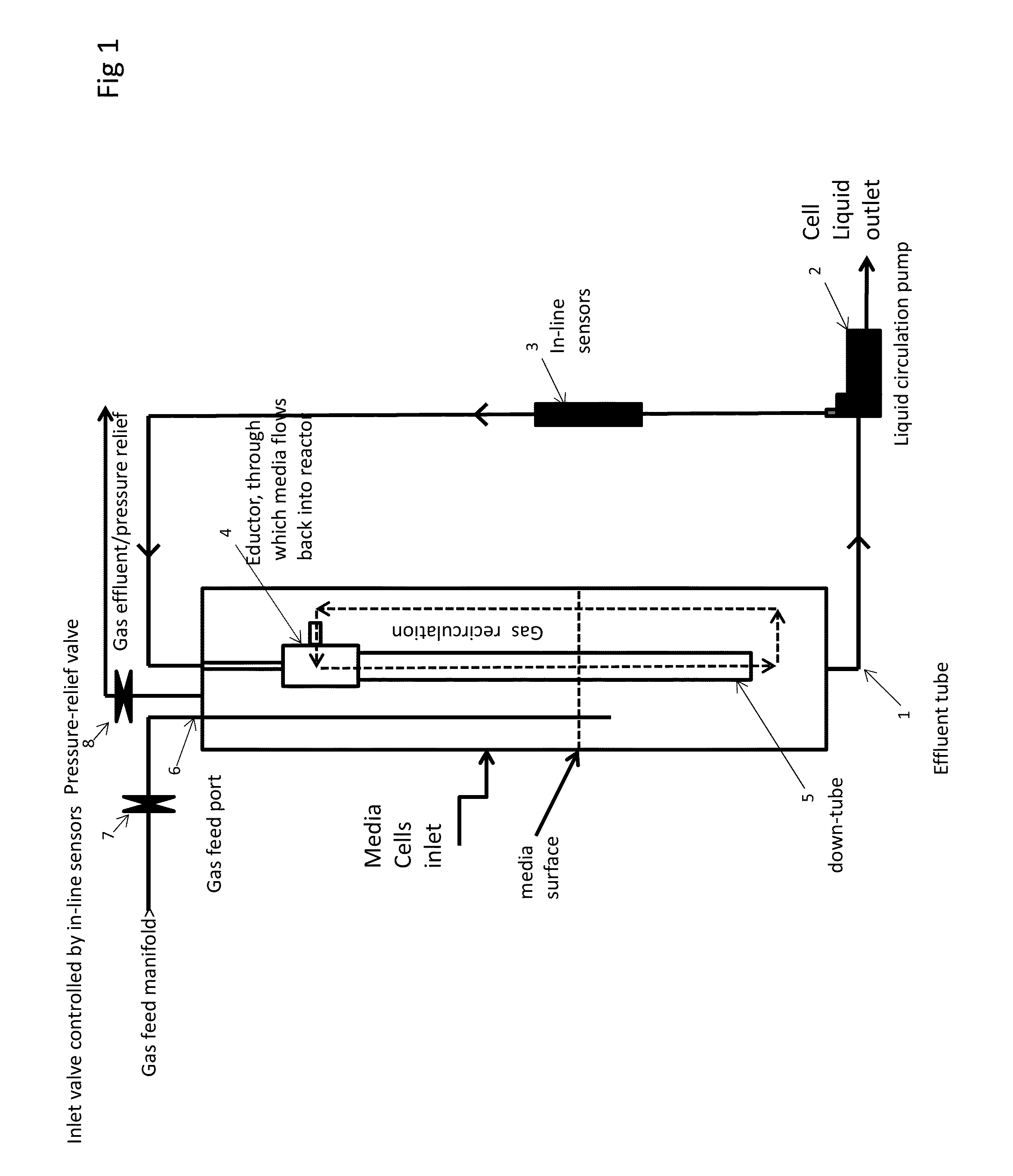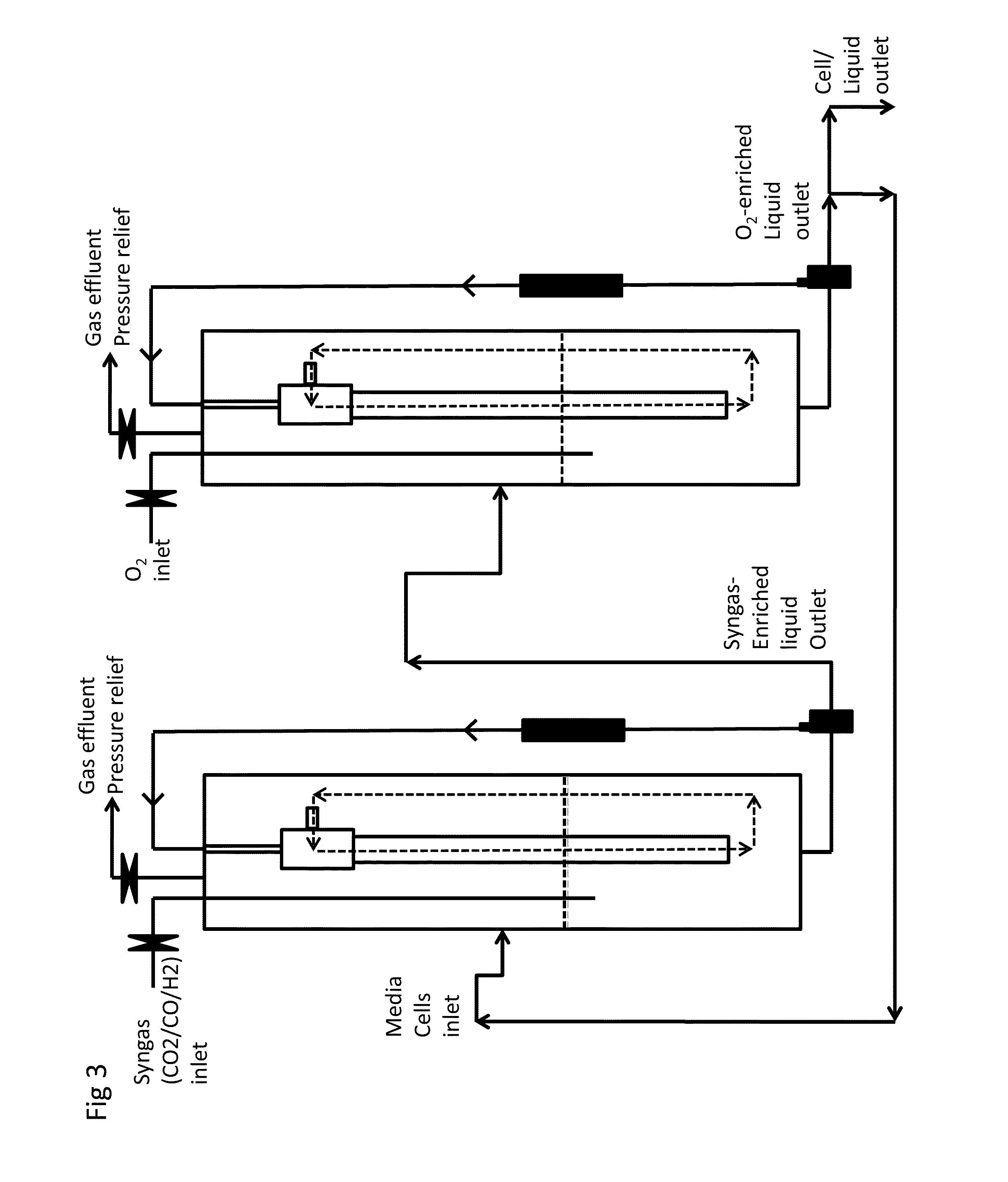Method and apparatus for growing microbial cultures that require gaseous electron donors, electron acceptors, carbon sources, or other nutrients
a technology of microbial culture and electron acceptor, which is applied in the direction of microorganisms, specific use bioreactors/fermenters, and after-treatment of biomass, etc., can solve the problems of limited effectiveness, economic feasibility, practicality and commercial adoption of the described processes, and achieves energy densities (energy per unit volume) generally higher and carbon chain organic compounds longer
- Summary
- Abstract
- Description
- Claims
- Application Information
AI Technical Summary
Benefits of technology
Problems solved by technology
Method used
Image
Examples
example
Experimental Purpose
[0268]Test the principle of the reactor design: effect of centrifugal pump and Venturi apparatus on growing bacterial cells.[0269]Test effects of varying Nitrogen[0270]Effects of stable glycerol addition as consumed with set initial nitrogen or further addition upon depletion.
Experimental Run:
[0271]Cell type / strain: A knallgas microorganism within the Rhodococcus genera (Rhodococcus opacus) with glycerol-grown inoculum (50 ml)[0272]Energy and carbon source: 20 g / L initial glycerol.[0273]Glycerol added with syringe pump to maintain >10 g / L.[0274]Media: 500 ml minimal salts medium (MSM)[0275]Air supply: O2 supplied depending on O2 demand, pressure controlled but air flow rate not measured.[0276]pH adjusted by addition of 2N NaOH to (reactors 1&2) by automated dosing to maintain pH=7+ / −0.1, 2N NaCO3 to (reactors 3&4)[0277]50 ml inoculated TKO2 grown on glycerol.[0278]Minerals added as a function of N usage
Protocol:
[0279]500 mL media put into reactor[0280]inoculated ...
PUM
| Property | Measurement | Unit |
|---|---|---|
| pore size | aaaaa | aaaaa |
| pore size | aaaaa | aaaaa |
| pressures | aaaaa | aaaaa |
Abstract
Description
Claims
Application Information
 Login to View More
Login to View More - R&D
- Intellectual Property
- Life Sciences
- Materials
- Tech Scout
- Unparalleled Data Quality
- Higher Quality Content
- 60% Fewer Hallucinations
Browse by: Latest US Patents, China's latest patents, Technical Efficacy Thesaurus, Application Domain, Technology Topic, Popular Technical Reports.
© 2025 PatSnap. All rights reserved.Legal|Privacy policy|Modern Slavery Act Transparency Statement|Sitemap|About US| Contact US: help@patsnap.com



